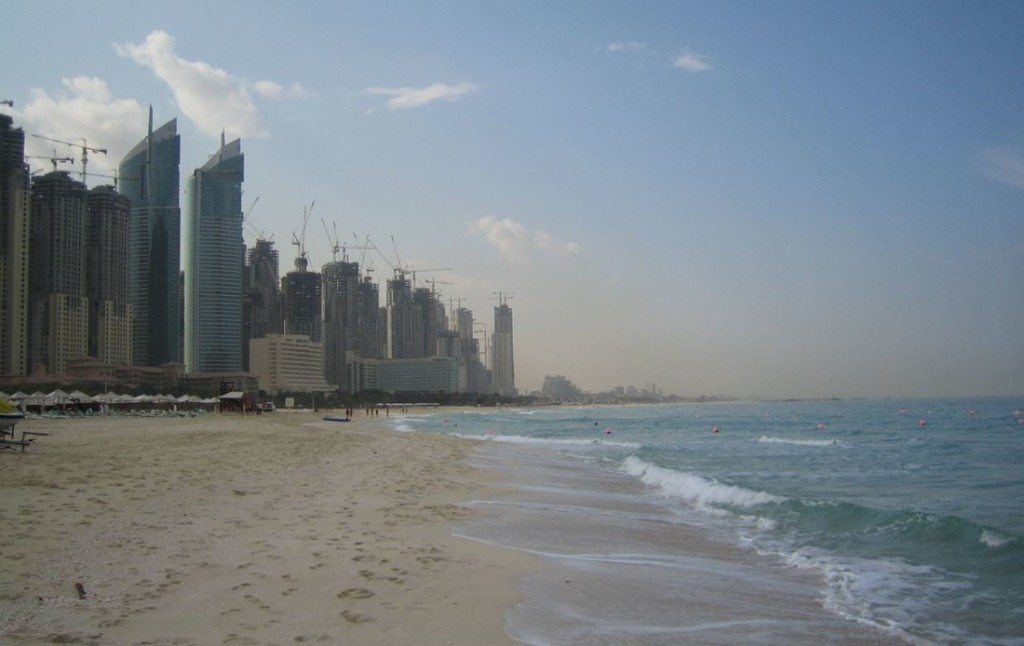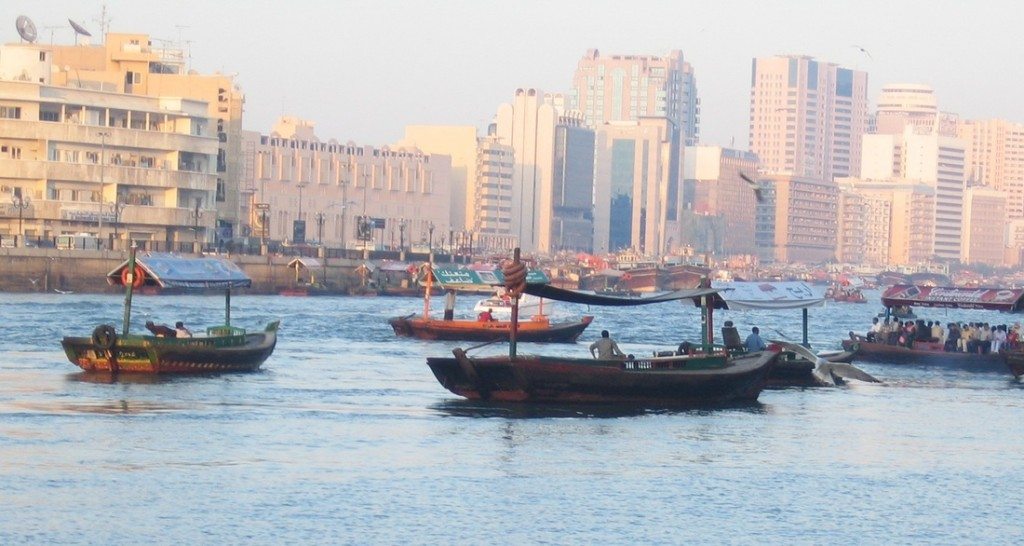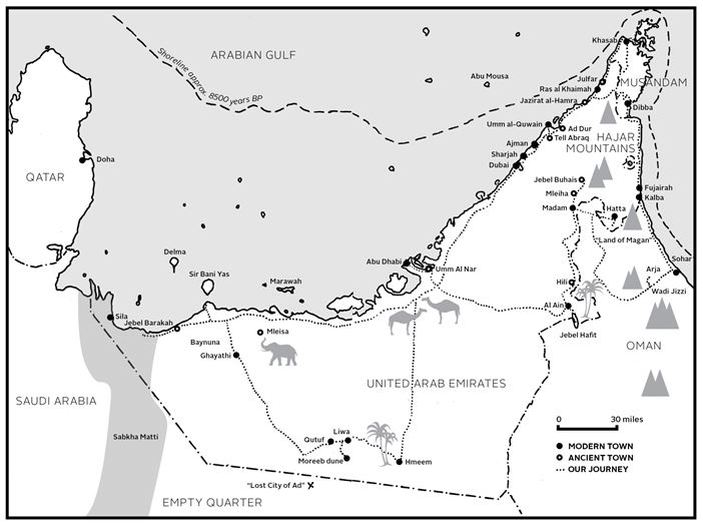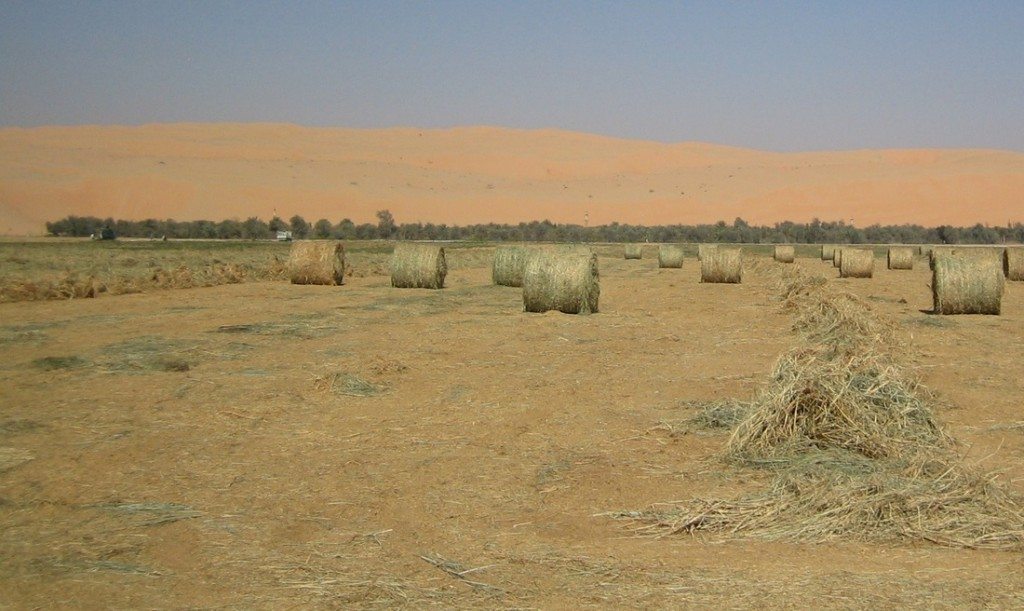“Dubai tries so hard to promote this image of an ultra-modern city that they almost seem to suppress its past.”
Dubai is a city that elicits sharp opinions. While its shopping malls, glittering lights, luxury hotels and villas, and iconic futuristic architecture continue to attract large numbers of tourists and business investors, many others simply avoid Dubai, convinced that it is nothing more than yet another mirage in the vast Arabian desert. In this exclusive interview with James Blake Wiener of Ancient History Encyclopedia (AHE), Dr. David Millar, author of Beyond Dubai: Seeking Lost Cities in the Emirates, discusses why he wrote a book about the United Arab Emirates’ ancient, hidden treasures and where one can find them.
JW: Dr. David Millar, welcome to Ancient History Encyclopedia (AHE)! I thank you for speaking with us about Beyond Dubai: Seeking Lost Cities in the Emirates.
I confess I was not sure what to expect when I first received your publication, as the United Arab Emirates (UAE) is not the sort of place that immediately springs to mind when one contemplates “ancient history.” Most people associate the UAE with the city of Dubai, modern skyscrapers, and shopping malls instead.
Within the Gulf, Bahrain has its claim to being ancient Dilmun, Kuwait has the archaeological riches of Failaka island, Qatar has its world class Museum of Islamic Art, and Oman has its faded caravanserai and haunted “jinn caves.” What were the circumstances that brought you to the UAE and provided the stimulus for writing a book about the UAE’s history?

Beneath the ultra-modern façade and continuing construction boom, Dubai is situated close to many archaeological sites and ancient settlements. © David Millar 2015.
DM: My job initially took me to Dubai, and like a lot of expats I went there for two years and stayed for ten! I had always had an amateur interest in archaeology, and I soon discovered that the Emirates has a very rich history with many archaeological sites. I started exploring them with my girlfriend over weekends and talking to the archaeologists working in the field.
What I also found remarkable is the fact that the Arabian Gulf (or “Persian Gulf”) is actually a very recent feature, only formed around six to eight thousand years ago when sea levels rose at the end of the last ice age. I found all this quite fascinating, but what really surprised me was that almost no one I met in the UAE seemed to be aware of its extraordinary history. Dubai tries so hard to promote this image of an ultra-modern city that they almost seem to suppress its past. So the book came out of my frustration of explaining to people around me about all these ancient cities that had flourished in the desert thousands of years before, which no one else seemed to know about.
JW: Beyond Dubai is difficult to categorize as it covers that which is ancient and modern, scientific and historic. It is certainly a “travel memoir,” but the narration is not typical of that found in most travel literature; in truth, it was very conversational with dashes of British humor.
Were you concerned at all with genre and convention when writing your book, David? Moreover, I wonder if you might offer a comment about writing travel literature and the specific challenges you faced in authoring Beyond Dubai.

Most people are surprised to learn that there is a well-preserved eight century CE archaeological site less than a mile (1 km) from the center of Dubai. The Jumeirah Archaeological Site was once a caravanserai, dating from the early days of Islam. © David Millar 2015.
DM: It is important for readers to be able to categorize a book, and I agree that this Beyond Dubai sits across a couple of genres. Initially I had written a more straightforward history book, focusing more on how Dubai is only where it is because of past climate change and the Arabian Gulf becoming filled with seawater, but the problem with that was that it did not appeal much to people who were not already passionate about history. So it failed in its main objective of making ordinary residents and visitors to Dubai aware of its hidden history.
What it really needed was a more light-hearted and entertaining approach; I rewrote it around the story of how my girlfriend and I discovered Dubai. An early review described it as “Bill Bryson meets Leonard Woolley,” which was pretty much what I was aiming for — part entertaining travelogue, part educational read.
JW: You make several fascinating forays into the UAE’s prehistory in Beyond Dubai. I found the passages on the prehistory of the Arabian Gulf to be particularly compelling. I had not realized that the Gulf was once dry land, that climate change created the Arabian Gulf, or that the first human settlements in what is now the UAE are nearly 8,000 years old.
Could you share some more information about the Neolithic graveyard of Jebel Buhais? It is 6,000-7,000 years old, but what makes this site important?
DM: What makes the Jebel Buhais site so significant is its age and the amount of stuff found there. It dates from just after the Arabian Gulf was formed, when the first people were settling in the Emirates, and hunter-gatherers followed the seasonal migration of animals. They did not build houses or permanent structures, but it seems that these people returned to the same spot every year and buried their dead there. Because so many graves have been found in one place archaeologists have been able to piece together a good picture of how they lived.
JW: Your passion and curiosity about all things “Emirati” is enthusiastically delineated throughout Beyond Dubai; as a result, I am eager to inquire if you plan on returning to the UAE to live or work? Or do you wish to explore other regions of the Middle or Near East?
DM: I loved my time in Dubai, but do not have any plans to return there to work. If I were to come back to the region for a holiday, I think Oman would be top of my list — its unspoiled and less developed, and arguably has even richer history than the UAE.

An abra ride is still the quickest way to cross Dubai Creek — for 1 Dh is the best value tourist trip you will find in the city. © David Millar 2015.
JW: David, before concluding our interview, may I ask you if you could name five places that should not be missed by travelers visiting the UAE for the first time?
DM: My personal “top five” for someone visiting the UAE would be:
- Al Fahidi Historic District — formerly known as the “Bastakiya Quarter,” this is the historical heart of Dubai right on the creekside (opposite all the dhows). It is a beautifully restored snapshot of life in Dubai a hundred years before modernity encroached.
- Jumeirah Archaeological Site — set right in the heart of Dubai, this is a place where you can imagine what life was like around the time of the birth of Islam, some fifteen hundred years ago.
- Hili, near Al Ain — this is a site dating to about 3000 BCE, roughly the same age as Stonehenge, and represents the period where people were just starting to move from a purely nomadic existence to a more sedentary one. The highlight is a stone tomb about 9 m (30 feet) in diameter with the most beautiful carving of two oryx and two people above the doorway.
- Liwa Oasis — the spiritual home of the Emirati people, located deep in the desert, about three hours away by car from Dubai. Some nice old forts here, but the best part is just being in the part of the desert that once flourished with gazelles and wildlife. The Liwa Oasis is the “great river in the west” of Bedouin legend.
- Sir Bani Yas Island — again about three hours away from Dubai, this island has over thirty archaeological sites. The oldest dates back to about 7,500 years ago; however, perhaps the most interesting site is a Nestorian Christian monastery, dating to c. 500 CE.
JW: Thanks so much for the adventure through reading, David! We look forward to reading your next work.
DM: You are most welcome, James!
Dr. David Millar studied archaeology and glaciology at the Universities of Bristol and Cambridge before working as a science journalist and editor in London. Poverty soon drove him into the oil industry however, as a result of which he lived in Dubai for over ten years, bought a Jeep, and developed a fascination for the archaeology of the Emirates and Arabian Peninsula. At the present, David resides in Calgary, Canada. You can learn more about David’s work and other books by visiting his website. One can additionally contact David on his Goodreads author page, the old-fashioned way at [email protected] or @emiratesarchaeo on Twitter.
All images featured in this interview have been attributed to their respective owners. Images lent to the Ancient History Encyclopedia by Dr. David Millar have been done so as a courtesy for the purposes of this interview. Unauthorized reproduction is strictly prohibited. All rights reserved. © AHE 2015. Please contact us for rights to republication.


